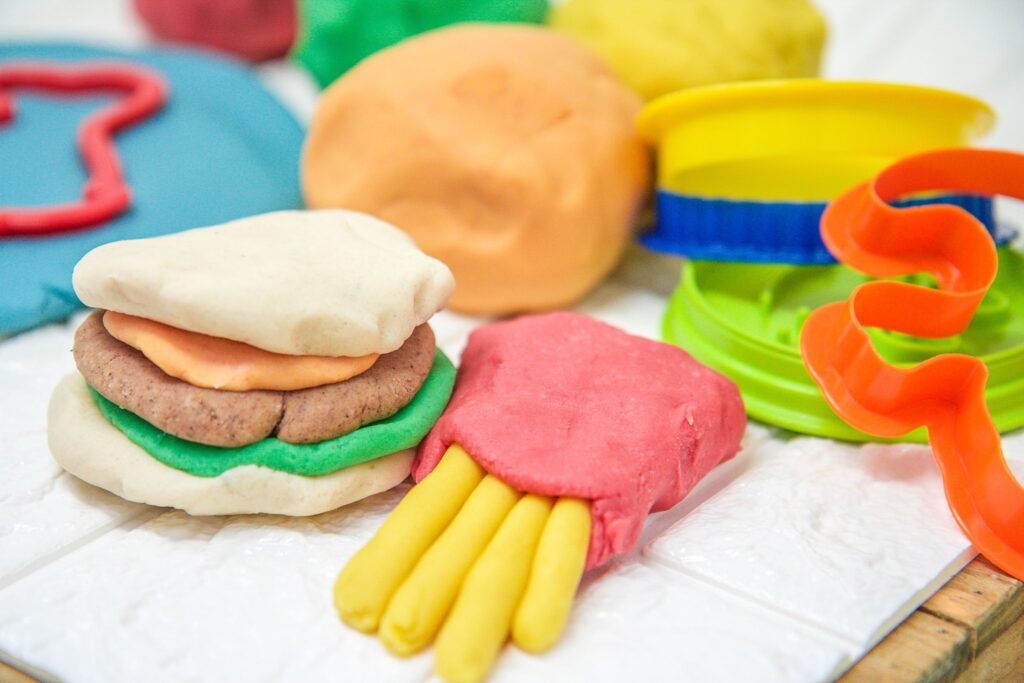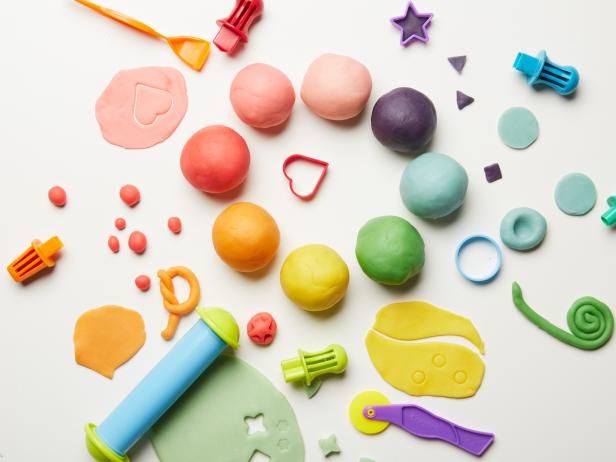
Playdough is not edible, but it won’t pose any significant harm if consumed in small amounts.
Many of us remember exploring our world of imagination with playdough when we were little— so much fun it was! The soft clayey playdough till today is a popular choice among parents to engage their kids in at-home activities.
The main concern, however, is that your child might consume the playdough while playing with it, which is nothing new since children frequently use their mouths to explore new things. A kid will hardly ever enjoy eating playdough again or continue to eat it once they have tasted the thing, but what to do when he does it?
Is playdough edible? How much safe is it? What are the possible outcomes of eating it? You’ll get answers to these questions in a while.
Is Playdough Edible?
Commercial playdough is not meant to be consumed, however, most playdough varieties are edible and should not be hazardous when consumed in small quantities.
Despite being non-toxic, the ingredients in playdough might still have detrimental impacts on the health of your child, like nausea and vomiting. Additionally, as the substance is not supposed to be broken down in the body, swallowing it in large amounts could result in digestive issues.
Actually, more than the playdough’s ingredients being harmful, the greater hazard is that if swallowed in large chunks, it can cause choking.
The good news is that you can make edible playdough for your child at home using edible food-grade ingredients if your child is keen to both play and eat.
Is Playdough Toxic?

All types of commercial and homemade (made with food-grade ingredients in correct proportion) play doughs are minimally toxic since they are meant for kids.
However, it’s necessary for you to read the product labels before purchasing commercial ones to look for caution and age guidelines. Certain commercial playdoughs like Hasbro Play-Doh and RoseArt Fun Dough are non-toxic for your child if consumed in a minimal amount.
As for homemade playdough, you have to select a consumable proportion of certain ingredients like salt and baking soda. Moreover, while picking other ingredients, you have to look for common allergens and also the ones that pose the risk of choking.
What Happens If My Kid Eats Playdough?
If your kid eats play dough do not panic. Make sure they get a sip of water right away to wash down any salt they may have eaten. Watch out for signs of vomiting, diarrhea, or constipation, and take them to the doctor immediately in case the signs of emergency are visible.
Toddlers should be made aware that it is not food and should not be consumed. While playdough is not that toxic, the main safety concern is the choking hazard. You should keep an eye on your child whenever possible in case they make a ball of a sizable portion and put it in their mouth. Learn first aid for choking for emergency cases.
What Happens If My Dog Eats Playdough?
Unfortunately, both store-bought and homemade playdough can be harmful to your dog, it can become ill from the high salt intake. However, your pup won’t experience any significant health issues if it eats playdough in a small amount.
If your dog consumes too much salt from the playdough, it could get sodium-ion poisoned. It may begin to vomit, have restlessness, may suffer from diarrhea, a high temperature, or even seizures, though these signs won’t show immediately.
If you think your dog may have consumed any, make sure there is plenty of water available. The body of your dog can typically eliminate the salt by drinking enough water. Also, watch out for the signs of salt poisoning and take it to the vet immediately if there are any.
What Are Some Edible Playdough Recipes To Make?
If your child loves playdough and won’t stop eating it, you can switch from commercial ones to homemade ones! You can make edible playdough using a variety of fun delicious recipes!
The Marshmallow Playdough
- Put the marshmallows in the microwave for about 10-30 seconds or until they completely melt down.
- Now place the sticky mix on a surface dusted with icing sugar and start to knead it, you may add extra sugar into the dough’s center before folding.
- When your playdough reaches the proper consistency, chill it in the refrigerator for 15 minutes and it’s ready to serve!
The Peanut butter-Honey Playdough
- In a medium bowl, take peanut butter and honey and mix them with a spoon.
- Once the mixture is ready, gradually add the powdered sugar to reduce stickiness.
- After your playdough has reached the desired texture, you can knead it for a few more minutes before letting it chill for at least 15 minutes in the refrigerator. And it’s ready!
The Oatmeal Playdough
- Take 1 cup of flour and 2 cups of oatmeal in a bowl
- Gradually add in the water while you stir the mixture with a spoon
- Now place it on a surface and knead. You may add in icing sugar and a little food coloring if you little
- When it becomes doughy, it’s ready!
The Classic Playdough
- Mix 2 cups of flour, 2 tablespoons of vegetable oil, 2 tablespoons of cream of tartar, and salt according to taste in a bowl.
- Now add warm water little by little to bind the ingredients into a dough. You may add a little food coloring to make it fun!
- When the dough has reached the correct consistency, stop adding water.
- Knead for a few more minutes and it’s ready!
Final Thoughts
Even while eating a small amount of play dough shouldn’t be a problem, it’s best to prevent the matter altogether.
Here’s what you can do to keep your child from eating the dough. Firstly, play dough that has a strong foodstuff scent, like peanut butter or chocolate, should not be offered until your child is old enough to comprehend that they shouldn’t eat it. More importantly, you shouldn’t actually let your child play with playdough until they are 2 years old or more, since the younger ones usually use their palates as they explore the world.
Hope you have got your answers regarding playdough safety and edibility. Always consult a physician immediately if you find your child behaving unusually after eating the playdough.